#alpine dairy goats
Explore tagged Tumblr posts
Text
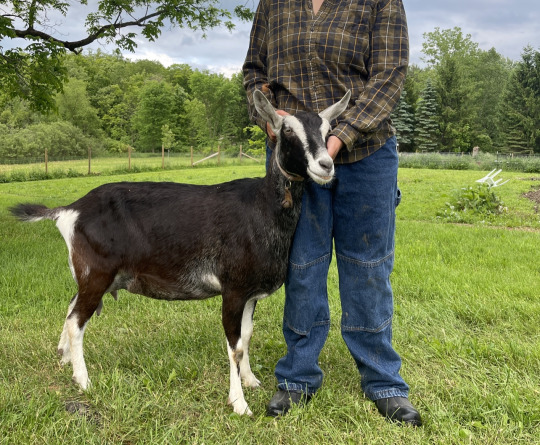
Vicky is doing great! And walking with me holding her collar very well recently :•)
#goats#vicky#alpine#picture we took for people asking questions about the bucks… everyone wants nigerian dwarf goats and its messed up#I literally put in all the posts that theyre adga registered alpine dairy goats but so many people are making mini whatevers#everyone asks if theyll stay small… um no#‘mini nubians’ are my nightmare… airplane ear nigerian dwarf mixes 💔💔💔#SORRY for loving well bred show goats 🧡
15 notes
·
View notes
Text
my goats cuter than ur goat
13 notes
·
View notes
Text

Alpine goat
21 notes
·
View notes
Text
Country Girl Success in the Ring
youtube

#ReefDVMs#RMSpeltz Farm#dairy milker#homesteading#farmstead#farm#goat#dairy goats#alpine goats#goat milk#goats#baby goats#baby farm animals#farm goats#goat kids#farm babies#cute farm animals#farming#raising goats#wether goat#nubian goats#nubian baby goats#bottle baby goats#show ring#showing goats#showing sheep#showing livestock#women in show ring#4h show#ffa show
3 notes
·
View notes
Text
The Regions of Kishetal
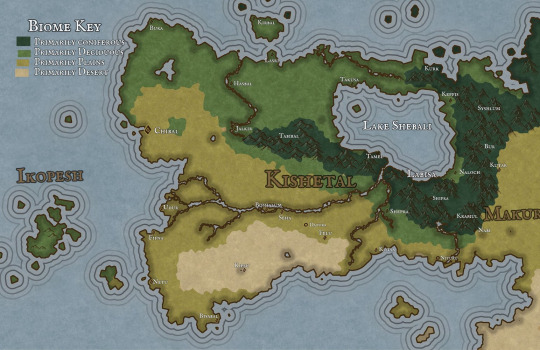
Pictured Above: An environmental map of the land of Kishetal

Pictured Above: A map of the 7 Kishic Regions
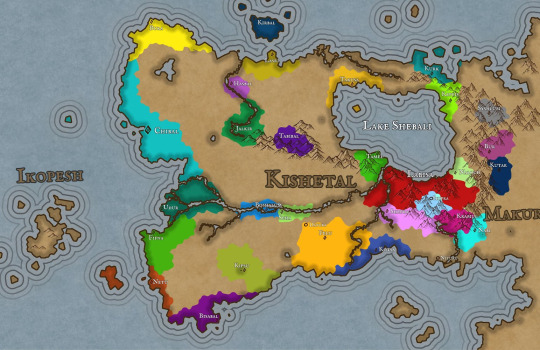
Pictured Above: A map of the Kishic City-States and their territories
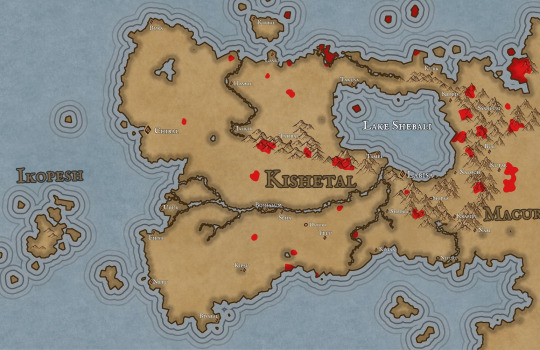
Pictured Above: A map of Significant Stable Forestfolk Populations
Here is a quick overview of the regions of Kishetal, the homeland of Narul and Ninma. And some good ol' maps. I'll be posting in the future about some of the creatures and forestfolk mentioned below!
As always send questions please!
Continues below the cut!
The Regions of Kishetal
1. The Red Cedar Mountains
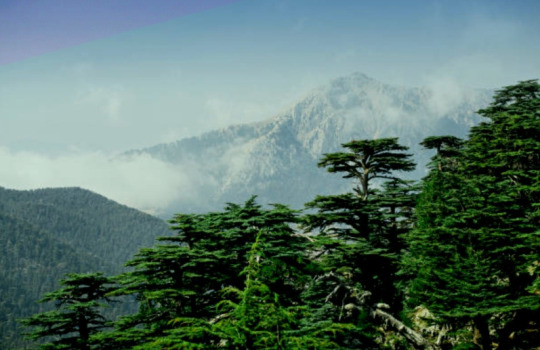
Pictured Above: The Red Cedar Mountains near Kepfis
The Red Cedar Mountains stretch from the Shabalic Sea in the north nearly to the Sea of Agitu in the south. The Red Cedar Mountains were formed in ancient times having already been present in the Age of Metal and Glass. However, the Red Cedar Mountains are not among the eleven “Chains of Sanctuary,” those mountain ranges around the planet in which humanity sheltered from the wrath of the gods during the Calamity. The predominant underlying stone of the RCM is limestone, with occasional but significant areas and deposits of serpentinite, basalt, and dolerite. The region experiences warm summers and cold winters, often with considerable snow and rainfall, particularly at higher elevations. The Mountains surround Lake Shebali, which acts as an inland sea and a source of food and transport for much of eastern Kishetal. At lower elevations, such as Labisa, the predominant vegetation is juniper and oak. Forests of black pine, cedar, and fir are dominant and common at higher elevations. The highest peaks are home to alpine meadows. Wild grapes, figs, and olives are all abundant in this region alongside their domesticated cousins.
Some fauna include wolves, jackals, wild goats, giant minks, wild bulls(aurochs), leopards, kishic lions, kishic tigers, caracals, roe deer, gazelle, wild boar, eagles, storks, horned rabbits, kishic brown bears, lynxes, and kishic ibex.
Very rarely found is the Kishic Elephant, actually a species of mammoth, these tiny pachyderms are about the same size as the average dairy cow. Only about 100 still survive in sheltered valleys to the north.
Examples of monstrous and magical Fauna including Flesh-eating deer, kiriki, dorasi, and the kutiri. While there are rumors of larger monsters such as dragons, these are mostly little more than legends and folklore. Though there is no telling what creatures could be hiding in the many caves and tunnels which dot the mountains.
There are numerous small forestfolk tribes which live in isolated areas.
(I will post more about that later)
2. The Felic Plain

Pictured Above: The Felic Plain north of Boshalum
The Felic Plains primarily consist of grassland with occasional patches of deciduous forest. The area is famed for its almond trees and its many wildflowers, including wild roses and hasir flowers. During the fall, great patches of the plains turn red with the blooming of hasir flowers.
The region experiences hot summers and mild but wet winters, which makes the region ideal for farming. As such, the Felic Plains act as the bread-basket of Kishetal. The region is split by the Aratshin River, which extends from Lake Shebali to the Green Sea. The plains are disrupted by an especially dense forested area known as the Garden. All attempts to settle the Garden have failed.
Fauna include, wolves, jackals, gazelles, wild bulls, kishic lions, deer, eagles, storks, horned rabbits, kishic brown bears, foxes, wild goats, polecats( which are popular pets), felic falcons, and hyenas.
The plains are home to several monstrous/magical species, including Flesh-eating deer, garudu, takmek, and the Unturu Serpent.
There are a handul of forestfolk tribes as well as a single hillfolk tribe in this region.
3. The Western Coast
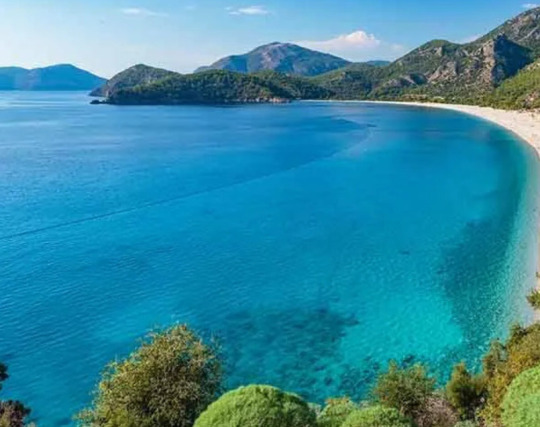
Pictured Above: The Western Coast near the city-state of Chibal
The Western Coast borders the Green Sea stretching from Bura in the north to Bisabal in the south. The ecoregion has a warm semi-tropical climate akin to a Mediterranean climate. Winter is the wettest season, and summer is the driest.
The Western coast consists primarily of three biomes. The deciduous forests in the north consist primarily of hornbeams, oaks, maples, cedar, and black pine. The central marshlands surrounding Udur have heavy concentrations of reeds, papyrus, poplar, and willow. The southern plains are similar to the Felic plain region though typically arider. Bay, olive, carob, and sweetgum are all common in this region. The Green Sea and its coast are home to many kinds of edible seaweed which form an essential part of the Chibalic and Buric diets.
Fauna include wild boars, foxes, jackals, wolves, badgers, wildcats, coastal brown bears, gazelles, deer, wild bulls, wild goats, and storks. Marine life includes dolphins, seals, whales, sea turtles, and many species of fish.
Monstrous fauna include bulari, sea-dragons, serpents, krinari, and ramitalek.
Aside from Ikopeshi's there are no surviving forestfolk tribes in this region.
4. The Northern Coast/Sheprian Forest
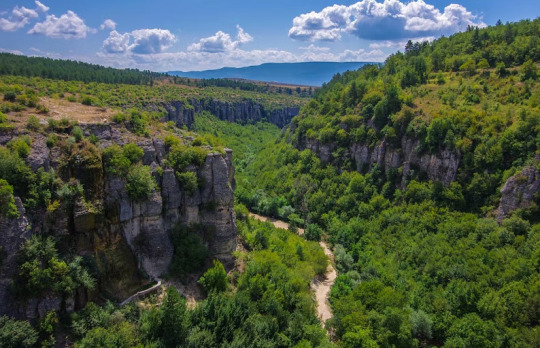
Pictured Above: The Sheprian Forest near Shepra
The Sheprian forest in the northern part of Kishetal is primarily composed of deciduous trees with occasional conifer patches at areas with higher elevations. Common trees include oak, chestnut, birch, hornbeam, black pine, cedar, and beech.
The climate is temperate with warm dry summers and cold wet winters. The north is typically thought of as the wildest region, with most city-states and settlements, including Shepra, clinging to the Corin river. Sheprian poetry is a unique variety of poetry, similar to the Japanese haiku, which originates from the forest festivals of the northern coast.
Fauna include wolves, jackals, gazelles, wild bulls, kishic lions, deer, eagles, storks, horned rabbits, kishic brown bears, foxes, wild goats, giant minks, horned rabbits, wild sheep, eagles, and kishic leopards.
Monstrous fauna include flesh-eating deer, garudu, kiriki, dorasi, and winged tigers.
This region contains the second highest concentration of forestfolk after the Red Cedar Mountains.
5. The Southern coast
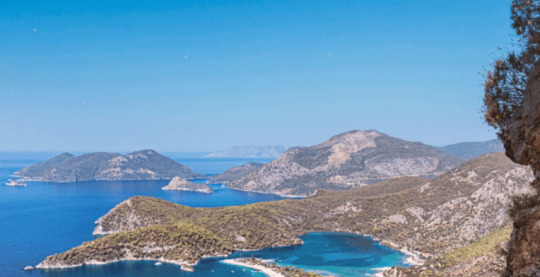
Placed Above: The Southern Coast near Bisabal
The Southern Coast consists of three regions; the southern deciduous forest, the scrubland, and the plains. The climate in the south is quite warm, with summers being hot and dry and winters mild in both temperature and rainfall. On rare occasions, the southern coast may experience heavy snowfall.
Major cities are sparse however, many villages dot the southern coast, many of these villages rely on piracy, preying primarily on Apunian and Jezaani ships traveling to and from the Western Coast.
Limestone plateaus and outcroppings are near the border of the southern coast, and the desert are said to be the remains of ancient buildings though this is not true.
Poplar, olive, bay, carob, almond, oaks, and umbrella pine are all common.
Fauna includes wolves, jackals, gazelles, wild bulls, kishic lions, deer, eagles, storks, horned rabbits, kishic brown bears, foxes, wild goats, polecats, felic falcons, kishic leopards, and hyenas.
The south is home to relatively few monstrous/magical species though it is home to the largest population of kiriki in Kishetal.
There are only two forestfolk populations in this region.
6. The Kipsian Desert
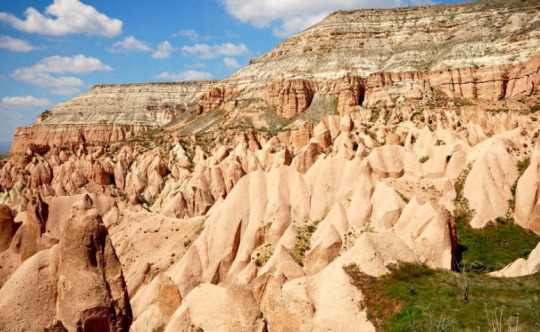
Pictured Above: The limestone formations of the Kipsian desert south east of Kipsu.
The Kipsian desert is the least populated region of Kishetal as the arid environment is not conducive to agriculture. Ruins of older civilizations suggest that the area may have once been more hospitable.
Plant life is sparse and largely limited to hardy shrubs and grasses. The region is famous for its carob and the candies and sweets produced from the carob by its inhabitants. Mesa, plateaus, pillars, and other stone structures are common; foreign visitors often visit the region seeking religious or spiritual enlightenment amongst the arches and columns. Many never leave.
Fauna include jackals, gazelles, kishic lions, deer, gazelle, wild asses, and hyenas. The Kipsian desert is also the only region in Kishetal in which the kishic ostrich and oryx survive.
Monstrous fauna include Flesh-eating deer, takmek, sikara, kiriki, and giant lions.
There are no forestfolk populations here.
7. The Makurian Steppe
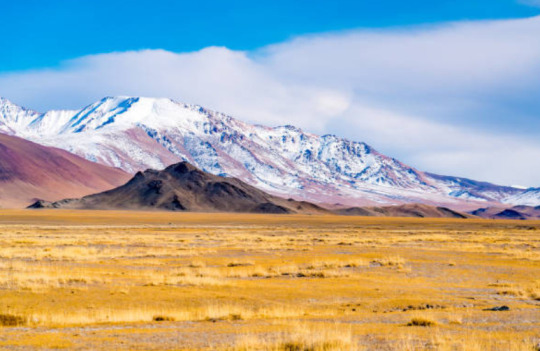
Pictured Above: The Makurian Steppe north of Shebal
The Makurian steppe is massive, spreading over most of western Masia. Only a tiny sliver of that vast extent falls in Kishetal. Trees are almost entirely absent. Vast expanses of grass-covered hills define the area. To the north of the steppe is the Shabalic forest, and to the south is the Jezaaic desert.
The heavy presence of sagebrush, sedges, and grasses and the relatively dry climate have led to a preference for a nomadic and pastoralist lifestyle. Makurian tribes regularly raid and intrude in the region, with their westward pushes typically being halted by the mountains.
Fauna include wild horses, wild asses, wild bulls, jackals, gazelle, deer, mountain sheep, macuri lions, and leopards.
Monstrous fauna include the tomob and the wulut.
There are only 3 native forestfolk populations in this region.
As always ask questions! Anything! And if y'all like this I might do this with some other regions.
@patternwelded-quill @flaneurarbiter @skyderman @blackblooms @roach-pizza @illarian-rambling @dezerex @theocticscribe @axl-ul, @persnickety-peahen @angie-j-kay
@surroundedbypearls I was looking through my intro post and I just realized I've been completely forgetting to put you in the taglist! Sorry about that!
#writeblr#writing#fantasy#worldbuilding#writer#fantasy writing#queer fantasy#fantasy world#testamentsofthegreensea#fantasy map#fantasy novel#fantasy worldbuilding#world building#narul#writblr
58 notes
·
View notes
Note
Goats are a job that turned into a hobby/interest for me... I work at a dairy and now have 3 wethers (fixed bucks) at home. I've got a Lamancha (pictured), Alpine, and Nubian: All dairy goat breeds.
The Lamancha is Gordon- He's not purebred, otherwise his ears would be shorter. But I still love him. Lamancha's are hit or miss with people because of their strange ears.... maked them look kind of bald/like a bug, but that's why they're my favorite breed.
1st photo is from a few days ago, 2nd is a baby photo from about 3 ½ months ago. (If you ever need goat pictures, baby or other wise I got you)


Goaties! They're perfect.
8 notes
·
View notes
Text

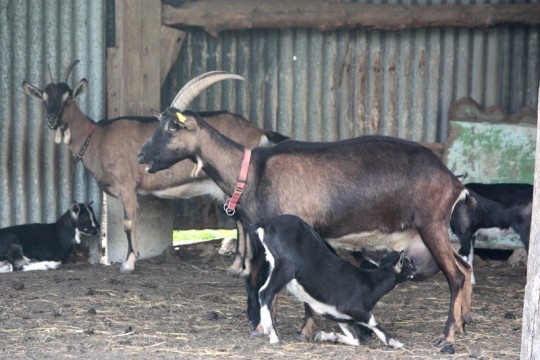



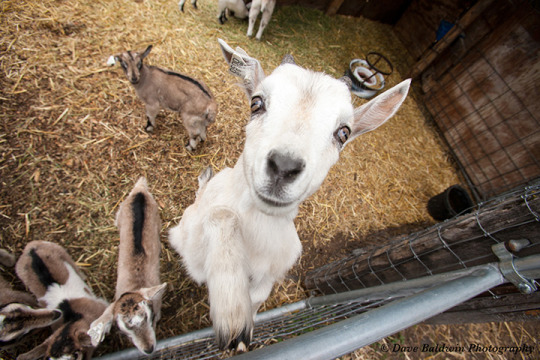

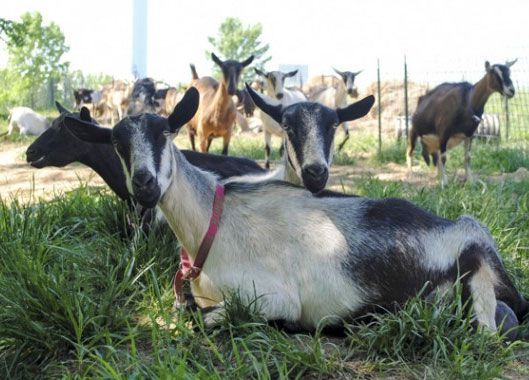


The Alpine, also known as the french alpine or alpine dairy goat is a breed of domestic goat which originated in the French and Swiss Alps. They are well known for there lean meat, docile temperament, large high quality milk output, and long lactation. Said milk is low in fat and high in sugars, making alpines highly prized and popular dairy goats. They are hardy animals that thrive in a variety of climates, and can be trained to be reliable pack animals. Females reach around 28 to 32 inches (70 to 80inches) tall at the withers and 110 to 155lbs (55 to 70kgs) in weight whilst males are 32 to 40inches (80 to 100cms) tall at the withers and weigh 170 to 220lbs (77 to 100kgs). They are a slimmer, medium sized, graceful yet strong breed characterized by there deep chest, wide hips, straight legs, voluminous udders, straight nose, horns, and large erect ears. The color pattern may range from pure white through shades of fawn, gray, brown, black, red, bluff, piebald or various shadings or combinations of these colors. Both sexes are generally short haired, but bucks usually have a roach of long hair along the spine. The beard of males is also quite pronounced, females may also sport beards. Breeding may occur year round and after a 145 to 155 day pregnancy a mother alpine goat may give birth to 1-2 kids. Under ideal conditions an alpine goat will reach sexual maturity at around 4 to 6 months of age and may live up to 18 years.
#pleistocene pride#pleistocene#pliestocene pride#pliestocene#cenozoic#goat#goats#french alpine goat#alpine goat
3 notes
·
View notes
Text
"In 2005, as the winner of the downhill at Val d'Isère, Vonn was offered a pregnant Tarine cow, a locally popular dairy breed. As most skiers do not want to keep livestock, she was offered the option to sell the animal immediately back to the organizers for EUR 5,000. However, Vonn decided to keep it, as she knew a farmer in Austria who would be willing to take care of the cow, who she named Olympe. In 2009, she won a goat, which she gave to a different farmer in Austria. In 2014, she won a calf in Val d'Isère, which she kept as well. As of 2014, she owned a small herd of cows on the farm."
alpine skiing prizes just hit different
4 notes
·
View notes
Text











Food on Board
Switzerland has a strong and ancestral dairy farming��and cheesemaking tradition. The breeding of cattle, sheep and goats for milk is attested in the Neolithic period and, since Antiquity, cheese has been exported from the Alpine regions. The rugged nature of the country makes approximately 80% of the agricultural land unsuitable for cultivation, which is therefore mainly exploited for cattle and sheep farming. This mode of exploitation has forged a large part of the Swiss landscape, in the Alps, the Jura and on the Swiss Plateau.
Today, cheese dairies and mountain pastures in Switzerland produce nearly 500 varieties of cheese, not counting fresh cheeses. Most of these, and all the ones very well known internationally, are semi-hard Alpine or Swiss-type cheeses such as Emmental and Gruyère. Dairy products in general are highly appreciated throughout the country, with butter and cream being classic ingredients of Swiss cuisine.
Cheese is a food of high nutritional value, composed of proteins, lipids, water and mineral salts, made from cow's milk (cattle), sheep's milk or goat's milk, to which has been added lactic ferments or rennet. In Switzerland, over 475 varieties of cheese are produced, in a wide variety of flavors, textures, and forms. Cow's milk is used in about 99 percent of the cheeses Switzerland produces. The remaining share is made up of sheep milk and goat milk.
Cheese is considered to be part of Switzerland's national heritage. It has become, together with chocolate, an archetypal Swiss food product. Swiss cheeses are known around the world for their flavour and authenticity. The export of these cheeses, some 40% of production in 2019, is also economically important for Switzerland. Each year, the Swiss themselves consume at least 22 kg of the dairy product per capita.
The best known Swiss cheeses are of the class known as Swiss-type cheeses, also known as Alpine cheeses, a group of hard or semi-hard cheeses with a distinct character. These notably include Emmental, Gruyère, Appenzeller and Sbrinz (the hardest), among many others. These are traditionally made in large rounds or "wheels" with a hard rind, to provide longevity to the shelf-life. They were also robust enough for transportation. Gruyère and Emmental are sometimes referred to as the "kings of cheeses".
Among notable hard but softer cheeses are Vacherin Fribourgeois and Raclette. A large number of other cheeses, called Mutschli are also made throughout Switzerland. In the same category is the Formaggella.
Soft cheeses notably include Vacherin Mont d'Or. Numerous local variants of Tommes are also made in western Switzerland.
Ziger or Sérac is the most notable example of fresh cheese. It is the by-product of the manufacture of cooked pressed cheeses, such as Gruyère or Emmental. It was also a staple food for mountain dwellers. Goat milk is often used for fresh cheeses, especially in southern Switzerland. Quark cheese is also very popular in Switzerland.
Cheese is commonly used in Swiss cuisine. Fondue and Raclette, which are melted cheese dishes, have become among the most popular dishes in the country.
Source: Wikipedia
#Malbec#Gin Tonic#travel#original photography#vacation#Swiss Cheese#apricot tarte with white chocolate mousse#champagne#port wine#appetizer#dessert#flying West#summer 2023#interior#I love stinky cheese#I usually only eat Swiss Cheese#Alpine cheese#en guete#enjoy your meal#Birebrot#Birnenbrot#Aarberger and Seeländer cheese
0 notes
Text


Ummmm yesterday vs today! Looking awesome to me, my family has had a ton of goats, but vicky is the first one ive had for this long! Itll be the first time i’m milking a goat thats mine :•>
#sooo excited its insane#my family used to have a ton of dairy goats they showed and everything but they stopped around when i was born so its all new(ish) to me!#we have family friends i do chores for and i always milk people’s goats for them at the fair and whatever but ive never had my own#so excited its crazy !!! 🧡🧡🧡#goats#vicky#ah! hoping for babies tomorrow it would be such perfect timing! i just have to paint the milk stand!#alpine
7 notes
·
View notes
Link
Genetic parameters of weeping teats in Italian Saanen and Alpine dairy goats and their relationship with milk production and somatic cell score - I have seen cases in Australia
0 notes
Text
Teach them Boys to be RIGHT
youtube
#ReefDVMs#RMSpeltz Farm#homesteading#farmstead#farm#goat#dairy goats#alpine goats#goat milk#goats#baby goats#baby farm animals#farm goats#goat kids#farm babies#cute farm animals#farming#raising goats#wether goat#nubian goats#nubian baby goats#bottle baby goats#show ring#showing goats#showing sheep#showing livestock#4h show#ffa show#ffa#4H
0 notes
Text
The Regions of Kishetal
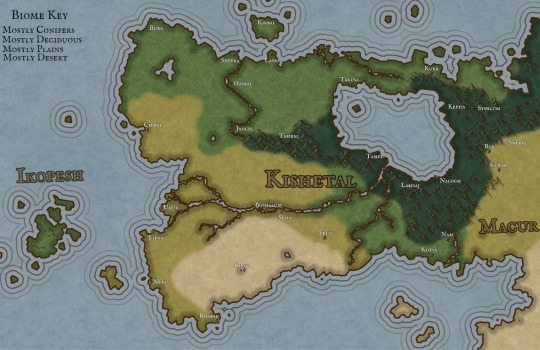
Pictured Above: An environmental map of the land of Kishetal
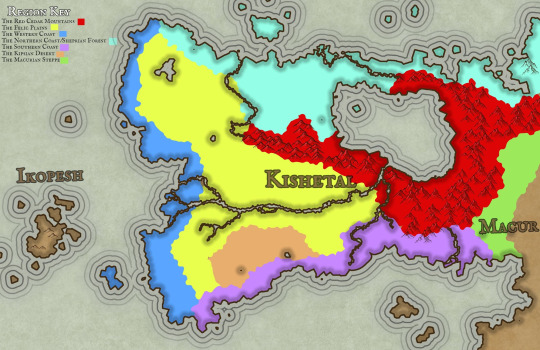
Pictured Above: A map of the 7 Kishic Regions

Pictured Above: A map of the Kishic City-States and their territories
Continues below the cut!
The Regions of Kishetal
1. The Red Cedar Mountains

Pictured Above: The Red Cedar Mountains near Kepfis
The Red Cedar Mountains stretch from the Shabalic Sea in the north nearly to the Sea of Agitu in the south. The Red Cedar Mountains were formed in ancient times having already been present in the Age of Metal and Glass. However, the Red Cedar Mountains are not among the eleven “Chains of Sanctuary,” those mountain ranges around the planet in which humanity sheltered from the wrath of the gods during the Calamity. The predominant underlying stone of the RCM is limestone, with occasional but significant areas and deposits of serpentinite, basalt, and dolerite. The region experiences warm summers and cold winters, often with considerable snow and rainfall, particularly at higher elevations. The Mountains surround Lake Shebali, which acts as an inland sea and a source of food and transport for much of eastern Kishetal. At lower elevations, such as Labisa, the predominant vegetation is juniper and oak. Forests of black pine, cedar, and fir are dominant and common at higher elevations. The highest peaks are home to alpine meadows. Wild grapes, figs, and olives are all abundant in this region alongside their domesticated cousins.
Some fauna include wolves, jackals, wild goats, giant minks, wild bulls(aurochs), leopards, kishic lions, kishic tigers, caracals, roe deer, gazelle, wild boar, eagles, storks, horned rabbits, kishic brown bears, lynxes, and kishic ibex.
Very rarely found is the Kishic Elephant, actually a species of mammoth, these tiny pachyderms are about the same size as the average dairy cow. Only about 100 still survive in sheltered valleys to the north.
Examples of monstrous and magical Fauna including Flesh-eating deer, kiriki, dorasi, and the kutiri. While there are rumors of larger monsters such as dragons, these are mostly little more than legends and folklore. Though there is no telling what creatures could be hiding in the many caves and tunnels which dot the mountains.
There are numerous small forestfolk tribes which live in isolated areas.
(I will post more about that later)
2. The Felic Plain

Pictured Above: The Felic Plain north of Boshalum
The Felic Plains primarily consist of grassland with occasional patches of deciduous forest. The area is famed for its almond trees and its many wildflowers, including wild roses and hasir flowers. During the fall, great patches of the plains turn red with the blooming of hasir flowers.
The region experiences hot summers and mild but wet winters, which makes the region ideal for farming. As such, the Felic Plains act as the bread-basket of Kishetal. The region is split by the Aratshin River, which extends from Lake Shebali to the Green Sea. The plains are disrupted by an especially dense forested area known as the Garden. All attempts to settle the Garden have failed.
Fauna include, wolves, jackals, gazelles, wild bulls, kishic lions, deer, eagles, storks, horned rabbits, kishic brown bears, foxes, wild goats, polecats( which are popular pets), felic falcons, and hyenas.
The plains are home to several monstrous/magical species, including Flesh-eating deer, garudu, takmek, and the Unturu Serpent.
There are a handul of forestfolk tribes as well as a single hillfolk tribe in this region.
3. The Western Coast
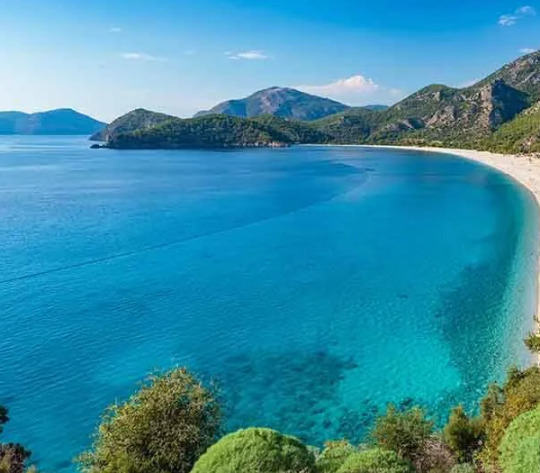
Pictured Above: The Western Coast near the city-state of Chibal
The Western Coast borders the Green Sea stretching from Bura in the north to Bisabal in the south. The ecoregion has a warm semi-tropical climate akin to a Mediterranean climate. Winter is the wettest season, and summer is the driest.
The Western coast consists primarily of three biomes. The deciduous forests in the north consist primarily of hornbeams, oaks, maples, cedar, and black pine. The central marshlands surrounding Udur have heavy concentrations of reeds, papyrus, poplar, and willow. The southern plains are similar to the Felic plain region though typically arider. Bay, olive, carob, and sweetgum are all common in this region. The Green Sea and its coast are home to many kinds of edible seaweed which form an essential part of the Chibalic and Buric diets.
Fauna include wild boars, foxes, jackals, wolves, badgers, wildcats, coastal brown bears, gazelles, deer, wild bulls, wild goats, and storks. Marine life includes dolphins, seals, whales, sea turtles, and many species of fish.
Monstrous fauna include bulari, sea-dragons, serpents, krinari, and ramitalek.
Aside from Ikopeshi's there are no surviving forestfolk tribes in this region.
4. The Northern Coast/Sheprian Forest

Pictured Above: The Sheprian Forest near Shepra
The Sheprian forest in the northern part of Kishetal is primarily composed of deciduous trees with occasional conifer patches at areas with higher elevations. Common trees include oak, chestnut, birch, hornbeam, black pine, cedar, and beech.
The climate is temperate with warm dry summers and cold wet winters. The north is typically thought of as the wildest region, with most city-states and settlements, including Shepra, clinging to the Corin river. Sheprian poetry is a unique variety of poetry, similar to the Japanese haiku, which originates from the forest festivals of the northern coast.
Fauna include wolves, jackals, gazelles, wild bulls, kishic lions, deer, eagles, storks, horned rabbits, kishic brown bears, foxes, wild goats, giant minks, horned rabbits, wild sheep, eagles, and kishic leopards.
Monstrous fauna include flesh-eating deer, garudu, kiriki, dorasi, and winged tigers.
This region contains the second highest concentration of forestfolk after the Red Cedar Mountains.
5. The Southern coast

Placed Above: The Southern Coast near Bisabal
The Southern Coast consists of three regions; the southern deciduous forest, the scrubland, and the plains. The climate in the south is quite warm, with summers being hot and dry and winters mild in both temperature and rainfall. On rare occasions, the southern coast may experience heavy snowfall.
Major cities are sparse however, many villages dot the southern coast, many of these villages rely on piracy, preying primarily on Apunian and Jezaani ships traveling to and from the Western Coast.
Limestone plateaus and outcroppings are near the border of the southern coast, and the desert are said to be the remains of ancient buildings though this is not true.
Poplar, olive, bay, carob, almond, oaks, and umbrella pine are all common.
Fauna includes wolves, jackals, gazelles, wild bulls, kishic lions, deer, eagles, storks, horned rabbits, kishic brown bears, foxes, wild goats, polecats, felic falcons, kishic leopards, and hyenas.
The south is home to relatively few monstrous/magical species though it is home to the largest population of kiriki in Kishetal.
There are only two forestfolk populations in this region.
6. The Kipsian Desert
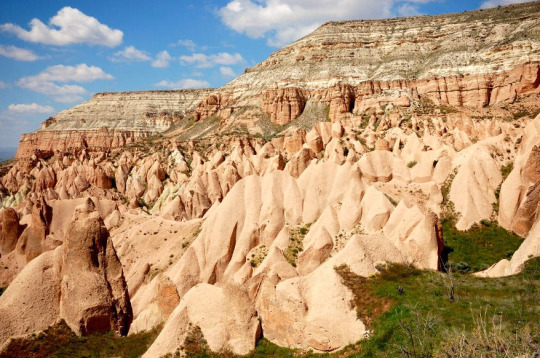
Pictured Above: The limestone formations of the Kipsian desert south east of Kipsu.
The Kipsian desert is the least populated region of Kishetal as the arid environment is not conducive to agriculture. Ruins of older civilizations suggest that the area may have once been more hospitable.
Plant life is sparse and largely limited to hardy shrubs and grasses. The region is famous for its carob and the candies and sweets produced from the carob by its inhabitants. Mesa, plateaus, pillars, and other stone structures are common; foreign visitors often visit the region seeking religious or spiritual enlightenment amongst the arches and columns. Many never leave.
Fauna include jackals, gazelles, kishic lions, deer, gazelle, wild asses, and hyenas. The Kipsian desert is also the only region in Kishetal in which the kishic ostrich and oryx survive.
Monstrous fauna include Flesh-eating deer, takmek, sikara, kiriki, and giant lions.
There are no forestfolk populations here.
7. The Macurian Steppe
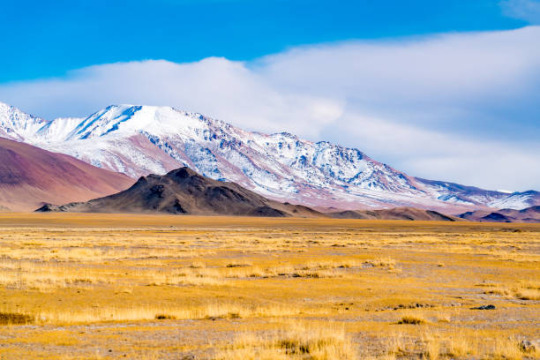
Pictured Above: The Macurian Steppe north of Shebal
The Macurian steppe is massive, spreading over most of western Macia. Only a tiny sliver of that vast extent falls in Kishetal. Trees are almost entirely absent. Vast expanses of grass-covered hills define the area. To the north of the steppe is the Shabalic forest, and to the south is the Jezaaic desert.
The heavy presence of sagebrush, sedges, and grasses and the relatively dry climate have led to a preference for a nomadic and pastoralist lifestyle. Macurian tribes regularly raid and intrude in the region, with their westward pushes typically being halted by the mountains.
Fauna include wild horses, wild asses, wild bulls, jackals, gazelle, deer, mountain sheep, macuri lions, and leopards.
Monstrous fauna include the tomob and the wulut.
There are only 3 native forestfolk populations in this region.
#worldbuilding#world building#fantasy#queer fantasy#fantasy world#fantasy writing#Kobani Narul Kishetal#Kobaniquestions#kobani#TestamentsoftheGreenSea
9 notes
·
View notes
Photo

It’s time to say “Cheese!” and bask in all your greatest cheesiness glory because it’s National Cheese Lover’s Day tomorrow, Friday, January 20th! Fortunately for all the cheese fans out there, locally produced, artisanal cheese is a mainstay at your local farmers market throughout the year, with the colder months being a great time to indulge in an array of fromage-forward delights and recipes. Cheese has been produced in this country since the early 17th century when English Puritan dairy farmers brought their cheesemaking techniques with them from the Old World to the American colonies. Cheesemaking has a long history in the northeast region stretching all the way from Vermont’s green mountains to the verdant pastures of New York State’s Hudson Valley. These days, you can find award-winning cheeses at your local farmers market that will rival even the finest European imports. These unique artisanal creations will delight your palette while adding plenty of flair and distinctive flavors to your next cheese board or cheese-based recipe: Specialty Cheese Today’s American cheesemakers are not controlled by the same traditions and regulations that govern much of European cheesemaking. This broad creative license has allowed entrepreneurial artisans to experiment with and invent highly specialized cheeses that are typically handcrafted and only produced in small batches. Their cheeses are made using high quality milks sourced from nearby dairies which imbues their creations with unique flavor profiles evocative of the local terroir, much like wine. Farmers markets provide these local cheesemakers with an ideal venue through which to introduce their niche offerings to a broader audience of enthusiastic, gastronomically minded shoppers. Perhaps no one embodies this epicurean phenomenon better than Hudson Valley-based cheesemaker Colin McGrath, whose singular creations have garnered him a loyal following amongst market regulars. A visit to the McGrath Cheese Company booth is always a must-do in order to sample their range of delicately complex, beautifully wrapped and descriptively named cheeses including Rascal (semi-firm, elastic, nutty, mild, alpine-like), Hootenanny (semi-firm, beer washed) and Bambino (soft, pungent, washed rind). Mozzarella Mozzarella is traditionally a southern Italian cheese made from milk produced by a breed of water buffalo indigenous to the Italian peninsula. The variety that you’ll find in your farmers market is typically made from cow's milk or a mixture of cow's and goat's milk sourced from local dairies, as very little water buffalo milk is commercially available in the United States. This versatile cheese is handmade by repeatedly kneading and pulling on curds during a process called pasta filata that results in its signature stretchiness. Mozzarella fresca is then formed into round balls that are packed in brine, whey or a water solution to retain moisture and shape. If you’re looking to indulge in a truly dreamy treat, Stracciatella cheese takes mozzarella to the next level in terms of its sheer decadence and milkiness. Stracciatella is made by soaking pulled mozzarella curds in vats of heavy cream. Amp up your next cheese board by including a bowl of farmers market Stracciatella drizzled with olive oil and sprinkled with a little sea salt and freshly ground black pepper for dolloping on crackers or slices of crusty bread. Alternatively, you can serve spheres of delicate Burrata which burst open to reveal a creamy Stracciatella filling encased in an outer shell of mozzarella. Burrata is delicious as an accompaniment to roasted vegetables or spooned over hot pasta and soups. Cheddar Originating in the quaint English village of Cheddar in Somerset, cheddar cheese is now produced all over the world and is the second most widely consumed cheese in the United States after mozzarella. While some processed and packaged cheese sold in supermarkets is labeled as “cheddar”, the kind you’ll find in the farmers market is typically handcrafted using only the best milk sourced from small New York State dairies and aged for several months to achieve its complex flavors. You will sometimes discover unusual cheddar varieties in the market such as farmhouse style, dill and smoked. Thanks to its savory heartiness, cheddar is the perfect candidate to use in a variety of winter comfort foods such as baked mac & cheese, potatoes au gratin and grilled cheese sandwiches. Alongside the slabs of cheddar cheese on display in the farmers market booths, you’ll often find tubs of “cheddar bites” for sale. To make these scrumptious little snacks, cheese curd is pulled from the vat during the cheesemaking process before its pressed into blocks for aging, then salted and cut into bite size pieces. Rubbery, buttery cheddar cheese curds melt beautifully atop poutine and work great as a substitute for gruyère in French onion soup. Feta and Goat Cheese One of the oldest cheeses in the world, feta is a crumbly, white-colored Greek cheese. It is traditionally made using sheep or goat’s milk but can also be made from cow’s milk which is the most common variety that you’ll find in the farmers market. Feta is typically packaged in small blocks submerged in brine in order to intensify flavor, retain softness, and extend its freshness and lifespan. While most people associate feta with a classic summery Greek salad, it is also delicious in a variety of hot dishes including Spinach Feta Grilled Cheese, Tiropita (a layered Greek cheese and egg pie) and in this Baked Feta and Butternut Squash Pasta with Sage and Garlic recipe. If goat’s cheese is what you seek, you can typically find a range of soft and spreadable artisanal chèvre in the farmers market, from plain to flavored varieties made using locally sourced ingredients. Share
#downtoearthmkts#cheese#nationalcheeseloversday#specialtycheese#cheddarcheese#mozzarella#stracciatella#fetacheese#goatcheese#shoplocal#buylocal#eatlocal#farmersmarket#farmersmarkets#eatdowntoearth
0 notes
Photo










The Oberhasli is a modern American breed of dairy goat. It derives from the subtype of Chamois Colored Goat from the Oberhasli district of the Bernese Oberland in central Switzerland. All purebred members of the breed descend from five Chamois Colored Goats imported to the United States in 1936. A breeder's association was formed in 1977, and a herdbook established in the following year. Until then, goats of this type had been known as Swiss Alpine, and interbred with Alpine goats of other types.
Standards for the Oberhasli are published by the American Dairy Goat Association and by the American Goat Society.
The coloring of the breed is called "chamoisée" or "chamoisee" for its perceived resemblance to the colors of the wild Alpine chamois. The coat is bay or mid-brown, with black markings consisting of two black facial stripes through the eyes to the muzzle, a black forehead, a black dorsal stripe or mule stripe, and black belly and lower limbs. Does, but not bucks, may also be solid black.
Mature goats are medium in size. Bucks range in height from 30–34", and does 28–32", with weights of 100–150 pounds. While the does are a dependable source of milk, bucks and wethers are also useful as pack animals because of their strength and calm demeanor. Some goat packers prefer Oberhaslis because they are said to be less fearful of water and other trail obstacles than are other breeds.
Oberhasli goats were first imported to the United States in the early 1900s, though it was not until 1936 that purebred herds were established and maintained. The breed was initially called the Swiss Alpine. Its registrations were included in the Alpine studbook, and its genetics contributed to the Alpine breed. In 1977, the breed name Oberhasli was adopted, and registration records were separated from the Alpines. This evolution of the breed’s name and identification has been one reason that its population in the United States has remained fairly small.
[x]
#caprine abc's#goat alphabet#O#oberhasli#swiss alpine#definition of breed is a bit muddy here#dairy goat#pack goat
33 notes
·
View notes